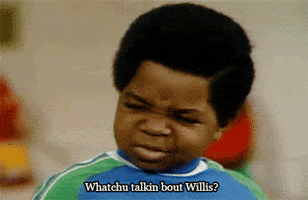You are using an out of date browser. It may not display this or other websites correctly.
You should upgrade or use an alternative browser.
You should upgrade or use an alternative browser.
Impulse Responses are Just EQ
- Thread starter texhex
- Start date
JiveTurkey
Goatlord
- Messages
- 21,071
I watched this the other day and imagined Jay doing a livestream correction video 

paisleywookiee
Rock Star
- Messages
- 8,235
Live footage of Jay preparing to respond:I watched this the other day and imagined Jay doing a livestream correction video

- Messages
- 6,472
I watched this the other day and imagined Jay doing a livestream correction video
Antonio Banderas queued up.
paisleywookiee
Rock Star
- Messages
- 8,235
Completely unrelated: I am now selling Apple Logic MatchEQ preset packs of your favorite IR speaker and mic combos!!
ragingplatypi
Shredder
- Messages
- 1,265
Jacob’s mom was just EQ in bed last night.
Sorry, I can find my own way out.
Sorry, I can find my own way out.
paisleywookiee
Rock Star
- Messages
- 8,235
Oh good, one of the commenters brought up Jim Lill.
CorrosiveMatter
Roadie
- Messages
- 356
Elder Quality?Jacob’s mom was just EQ in bed last night.
Sorry, I can find my own way out.
texhex
Roadie
- Messages
- 969
Completely unrelated: I am now selling Apple Logic MatchEQ preset packs of your favoriteIRspeaker and mic combos!!
Far-field or near-field?
paisleywookiee
Rock Star
- Messages
- 8,235
YES! It's just EQ!!Far-field or near-field?
ragingplatypi
Shredder
- Messages
- 1,265
Aww. Don’t mess with Jim Lill. He’s pretty and charming.Oh good, one of the commenters brought up Jim Lill.
And entertainingly obsessive (which we can all relate to).
AlbertA
Roadie
- Messages
- 877
Someone send him this:
A guitar speaker cabinet behaves, for the most part, like a linear time-invariant system — which means it can be fully characterized by its impulse response.
An impulse response is, literally, the response of a linear time-invariant system to an impulse. If you take the Fourier Transform of an impulse response, you obtain the frequency response, which includes the magnitude (how each frequency level is changed) and the phase (how each frequency is delayed or shifted).
An EQ in a typical audio-world scenario (consoles, pedals, etc.) is usually a limited bank of filters, each controlling a specific frequency band so you can shape its magnitude but you are not typically controlling the phase.
Nowadays, in the guitar world, “IR” typically means “a finite impulse response that characterizes the response of a speaker cabinet.”
So saying “an IR is just an EQ” doesn’t make much sense and is misleading. The following is valid, though: “An EQ can be represented by an impulse response.”
By the way, the term EQ (equalizer) comes from early telephone and radio engineering, because equalizers were literally used to equalize the spectrum when sending information over transmission lines or radio.
A guitar speaker cabinet behaves, for the most part, like a linear time-invariant system — which means it can be fully characterized by its impulse response.
An impulse response is, literally, the response of a linear time-invariant system to an impulse. If you take the Fourier Transform of an impulse response, you obtain the frequency response, which includes the magnitude (how each frequency level is changed) and the phase (how each frequency is delayed or shifted).
An EQ in a typical audio-world scenario (consoles, pedals, etc.) is usually a limited bank of filters, each controlling a specific frequency band so you can shape its magnitude but you are not typically controlling the phase.
Nowadays, in the guitar world, “IR” typically means “a finite impulse response that characterizes the response of a speaker cabinet.”
So saying “an IR is just an EQ” doesn’t make much sense and is misleading. The following is valid, though: “An EQ can be represented by an impulse response.”
By the way, the term EQ (equalizer) comes from early telephone and radio engineering, because equalizers were literally used to equalize the spectrum when sending information over transmission lines or radio.
Last edited:
paisleywookiee
Rock Star
- Messages
- 8,235
If we’re to make the leap that “an IR is just EQ”, then how do I go about making a hall reverb IR in an EQ?
Even in a 500ms cab IR, how is that reflected in an EQ?
Seems…..suspect.
Even in a 500ms cab IR, how is that reflected in an EQ?
Seems…..suspect.
Similar threads
- Replies
- 70
- Views
- 3K
- Replies
- 70
- Views
- 4K
- Replies
- 2
- Views
- 1K

